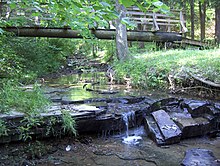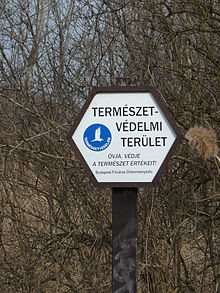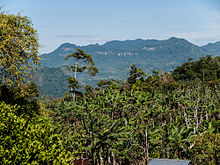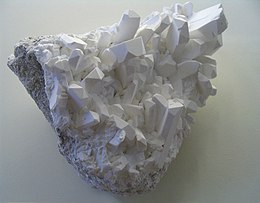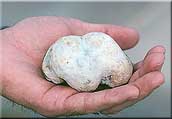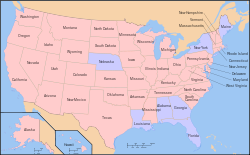The Bee Lick Creek, of the Jefferson Memorial Forest, was designated as a National Audubon Society wildlife refuge.
A nature reserve (also known as a natural reserve, wildlife refuge, wildlife sanctuary, biosphere reserve or bioreserve, natural or nature preserve, or nature conservation area), is a protected area of importance for flora, fauna, or features of geological or other special interest, which is reserved and managed for purposes of conservation and to provide special opportunities for study or research. They may be designated by government institutions in some countries, or by private landowners, such as charities and research institutions. Nature reserves fall into different IUCN categories depending on the level of protection afforded by local laws. Normally it is more strictly protected than a nature park. Various jurisdictions may use other terminology, such as ecological protection area or private protected area in legislation and in official titles of the reserves.
History
Charles Waterton established the first nature reserve in 1821.
Cultural practices that roughly equate to the establishment and
maintenance of reserved areas for animals date back to antiquity, with
King Tissa of Ceylon establishing one of the world's earliest wildlife sanctuaries in the 3rd century BC.
Early reservations often had a religious underpinning, such as the
'evil forest' areas of West Africa which were forbidden to humans, who
were threatened with spiritual attack if they went there. Sacred areas
taboo from human entry to fishing and hunting are known by many ancient
cultures worldwide.
The world's first modern nature reserve was established in 1821 by the naturalist and explorer Charles Waterton around his estate in Walton Hall, West Yorkshire. He spent £9000 on the construction of a three-mile long, 9 ft tall wall to enclose his park against poachers. He tried to encourage bird life by planting trees and hollowing out trunks for owls to nest in.
Waterton invented artificial nest boxes to house starlings, jackdaws and sand martins; and unsuccessfully attempted to introduce little owls from Italy. Waterton allowed local people access to his reserve and was described by David Attenborough
as "one of the first people anywhere to recognise not only that the
natural world was of great importance but that it needed protection as
humanity made more and more demands on it".
Drachenfels (Siebengebirge) was protected as the first state-designated nature reserve in modern-day Germany; the site was bought by the Prussian State in 1836 to protect it from further quarrying.
The first major nature reserve was Yellowstone National Park in Wyoming, United States, followed by the Royal National Park near Sydney, Australia and the Barguzin Nature Reserve of Imperial Russia, the first of zapovedniks set up by a federal government entirely for the scientific study of nature.
Around the world
There are several national and international organizations that oversee the numerous non-profit animal sanctuaries and refuges in order to provide a general system for sanctuaries to follow. Among them, the American Sanctuary Association monitors and aids in various facilities to care for exotic wildlife. The number of sanctuaries has substantially increased over the past few years.
Australia
In Australia, a nature reserve is the title of a type of protected area used in the jurisdictions of the Australian Capital Territory, New South Wales, Tasmania and Western Australia. The term "nature reserve" is defined in the relevant statutes
used in those states and territories rather than by a single national
statute. As of 2016, 1767 out of a total of 11044 protected areas listed
within the Australian National Reserve System used the term "nature reserve" in their names.
Brazil
In Brazil, nature reserves are classified as ecological stations (Portuguese: )estações ecológicas) or biological reserves (Portuguese: reservas biológicas) by the National System of Conservation Units.
Their main objectives are preserving fauna and flora and other natural
attributes, excluding direct human interference. Visits are allowed only
with permission, and only for educational or scientific purposes.
Changes to the ecosystems in both types of reserve are allowed to
restore and preserve the natural balance, biological diversity and
natural ecological processes.
Ecological stations are also allowed to change the environment within
strictly defined limits (e.g. affecting no more than three percent of
the area or 1,500 hectares (3,700 acres), whichever is less) for the
purpose of scientific research.
A wildlife reserve in Brazil is also protected, and hunting is not allowed, but products and by-products from research may be sold.
The wildlife refuge in Brazil
has as its objective protecting natural flora and fauna where
conditions are assured for the existence and reproduction of species or
communities of the local flora and the resident or migratory fauna. It
can be constituted by private areas, as long as it is possible to make
compatible the objectives of the unit with the utilization of the land
of the natural resources of the location by the landowners. Public
visitation is subject to the conditions and restrictions established by
the management plan of the unit and to the regulations established by
the body most important for its administration and scientific research
depends on previous authorization from the body responsible for the
administration of the unit and is subject to the conditions and
restrictions established by this body.
Canada
In Canada, UNESCO has recognized 18 nature reserves, mostly along the Niagara Escarpment and St. Lawrence River in Ontario.
Federally, Canada recognizes 55 National Wildlife Areas across
the country, containing species of ecological significance. The relevant
Ministry is known as Environment and Climate Change Canada, which
protects these areas under legislation known as the Canada Wildlife Act.
The areas comprise approximately 1 million hectares of habitat, half of
which is marine habitat, for the purpose of conservation and research.
Many conservation groups protect nature reserves in Canada as
well, including Nature Conservancy Canada, Ducks Unlimited, and
Escarpment Biosphere Conservancy. These charities operate to protect
wilderness on privately owned lands, including through Canada's
Ecological Gifts Program.
Egypt
There are 30 nature reserves in Egypt
which cover 12% of Egyptian land. Those nature reserves were built
according to the laws no. 102/1983 and 4/1994 for protection of the
Egyptian nature reserve. Egypt announced a plan from to build 40 nature
reserves from 1997 to 2017, to help protect the natural resources and
the culture and history of those areas. The largest nature reserve in
Egypt is Gebel Elba (35,600 square kilometres (13,700 sq mi)) in the southeast, on the Red Sea coast.
Europe
A bridged stone river in Bistrishko Branishte, an early Bulgarian nature reserve established in 1934.
Denmark
Denmark has three national parks
and several nature reserves, some of them inside the national park
areas. The largest single reserve is Hanstholm Nature Reserve, which
covers 40 km2 (9,900 acres) and is part of Thy National Park.
Sweden
In Sweden,
there are 29 national parks. The first of them was established in 1909.
In fact, Sweden was the first European country that established 9
national parks.
There are almost 4,000 nature reserves in Sweden. They comprise about
85% of the surface that is protected by the Swedish Environmental Code.
Estonia
In Estonia, there are 5 national parks, more than 100 nature
reserves, and around 130 landscape protection areas. The largest nature
reserve in Estonia is Alam-Pedja Nature Reserve, which covers 342 km2 (85,000 acres).
France
Germany
In 1995 Germany had 5,314 nature reserves (German: Naturschutzgebiete) covering 6,845 km2 (2,643 sq mi), the largest total areas being in Bavaria with 1,416 km2 (547 sq mi) and Lower Saxony with 1,275 km2 (492 sq mi).
Hungary
Nature reserve near Budapest, next to Lake Naplás
In Hungary, there are 10 national parks, more than 15 nature reserves and more than 250 protected areas.
Hortobágy National Park
is the largest continuous natural grassland in Europe and the oldest
national park in Hungary. It is situated on the eastern part of Hungary,
on the plain of the Alföld. It was established in 1972. There are
alkaline grasslands interrupted by marshes. They have a sizable
importance because there are the fishponds. One of the most spectacular
sights of the park is the autumn migration of cranes. Some famous
Hungarian animal species live in Hortobágy National Park, such as the
grey cattle, racka long-wool sheep living only in Hungary, Hungarian
horses and buffalo. Hortobágy National Park has been a UNESCO World Heritage Site since 1 December 1999.
Poland
Path on Szczeliniec Wielki, a famous nature reserve in the Stołowe Mountains in SW Poland
As of 2011, Poland has 1469 nature reserves.
Portugal
Nature reserves are one of the 11 types of protected areas in
Portugal. As of 2012, Portugal had a total of 46 protected areas, which
represented 6,807.89 km2 (2,628.54 sq mi) of land and 463.94 km2 (179.13 sq mi) of marine surfaces. Among the protected areas, nine are classified as nature reserve (Portuguese: reserva natural).
Romania
About 5.18% of the area of Romania has a protected status (12,360 km²), including the Danube Delta, which makes up half of this area (2.43% of Romania's total area).
Switzerland
The Limmatspitz nature reserve of Pro Natura
The Swiss National Park,
created in 1914, was one of the earliest national parks in Europe. In
addition to the Swiss National Park, Switzerland also has sixteen
regional nature parks.
The environmental organization Pro Natura takes care of about 650 nature reserves of various sizes throughout Switzerland (250 square kilometers).
India
India's
18 biospheres extend over a total of 85,940 square kilometres
(33,180 sq mi) and protect larger areas than typical national parks in
other countries. The first national reserve of India was established in
1986.
Israel
Israel's
National parks of Israel are declared historic sites or nature
reserves, which are mostly operated and maintained by the National
Nature and Parks Authority. As of 2019, Israel maintains more than 490
nature reserves that protect 2,500 species of indigenous wild plants, 20
species of fish, 530 species of birds and 70 species of mammals. Total,
they cover (6,400 square kilometres (2,500 sq mi)) of nature reserves,
approximately 28% of Israel land. In 1984, the two areas with the highest number of nature reserves were the South (15.2%) and Samaria (the Shomron, 13.5%).
Japan
Under the
Nature Conservation Law, places can be designated as 'wilderness areas',
'nature conservation areas' and 'prefectural nature conservation
areas'. In 1995, when the Japanese Government published its information
in English, there were 5 wildernesses, 10 nature conservation areas and
516 prefectural nature conservation areas.
Jordan
There are seven nature reserves in Jordan. In 1966 the organization that would later start Jordan's nature reserves, the Royal Society for the Conservation of Nature,
was founded. RSCN's first efforts involved bringing back severely
endangered species. In 1973, RSCN was given the right to issue hunting
licenses, giving RSCN an upper hand in preventing extinction. The first
step was the founding of Jordan's first nature reserve, Shaumari Wildlife Reserve, in 1975. The primary purpose was to create means to breed endangered species, specifically: the Arabian oryx, gazelles, ostriches, and Persian onagers in their natural environment.
Kyrgyzstan
By the end of 2009 there were 10 nature reserves (Kyrgyz: корук, koruk) in Kyrgyzstan covering 600,000 hectares (6,000 km2) or about three percent of the total area of the country.
New Zealand
Aoraki/Mount Cook National Park in New Zealand
New Zealand has a variety of types of reserve, including national parks,
various types of conservation areas (including stewardship land that is
yet to be officially classified), and seven specific types of
"reserve", each of which prioritize various degrees of protection
to different amenities such as scenery, recreation, flora and fauna,
scientific value, or history. Land is often sub-categorised beneath its
general classification, as defined in law between the Reserves Act of 1977, the National Parks Act of 1980, and the Conservation Act of 1987. Under these classifications, the Department of Conservation
administers more than 80,000 square kilometres (31,000 sq mi)—nearly
30% of the nation's total area—with at least some degree of protection.
This land is composed of 14 National Parks, 30 Conservation Parks, and
approximately 8,900 discrete areas of land in total.
Although the most public land is strongly protected for natural preservation, the term nature reserve
is specifically defined in the Reserves Act to mean a reserve that
prioritizes the protection of rare flora and fauna, to the extent that
public access is by permit only. Some of these reserves include Ecological Islands,
a comparatively new concept in wildlife preservation, pioneered in New
Zealand to help rebuild the populations of nearly extinct birds, and
other species that are heavily threatened by introduced predators.
Nicaragua
Peñas Blancas, part of the Bosawás Biosphere Reserve
is the second largest rainforest in the Western Hemisphere, after the
Amazonian Rainforest in Brazil. Located northeast of the city of Jinotega in Northeastern Nicaragua.
In Nicaragua, the Ministry of the Environment and Natural Resources
(MARENA) is in charge of environmental protection and of the study,
planning, and management of Nicaragua's natural resources. Nearly
one-fifth of the territory is designated as protected areas like
national parks, nature reserves (including the Bosawás Biosphere Reserve), and biological reserves. Nicaragua has 78 protected areas that cover 22,422 km2,
about 17.3% of the nation's landmass. Private nature reserves exist
with land excluded from private land trusts and maintained at the sole
cost of the proprietor. For example, "O Parks, WildLife, and Recreation"
was established within the Mesoamerican Biological Corridor by former FDNY firefighter Kevin Michael Shea, who purchased 46 acres (0.19 km2) of land in this manner and is an example of this type of private nature reserve.
Russia
South Ural Nature Reserve in Russia
There are around 100 nature reserves (Russian: заповедник, zapovednik)
in Russia, covering some 330,000 square kilometres (130,000 sq mi), or
about 1.4% of the country's total area. A few of them predate the October Revolution of 1917, but most have been created during the Soviet Union
era. There are also natural protected areas where only certain species
are protected, or only certain activities are prohibited; those are
known as zakaznik (Russian: заказник).
Unofficial sanctuaries can also occur as a result of human accidents; the Chernobyl Exclusion Zone
has in practice become a wildlife refuge since very few people live in
the area. Wildlife has flourished in the zone since the Chernobyl
nuclear accident in 1986.
South Africa
South
Africa is well known for its many nature reserves. The oldest nature
reserve in the country (and oldest conservation area in the world) is
the Groenkloof Nature Reserve that was established in 1892 in the capital city Pretoria in the old South African Republic and current Republic of South Africa. The country has many national parks but the best-known is the Kruger National Park, which was announced in 1898, and is the largest, at nearly 2,000,000 hectares (20,000 km2). The Kruger Park and Table Mountain National Park are two of South Africa's most visited tourist attractions. South Africa also has a number of World Heritage Sites and provincial game reserves including Shamwari, Londolozi, Sanbona and Lalibela. The country currently has 20 national parks covering 3,700,000 hectares (37,000 km2), about 3% of the total area of South Africa.
Sri Lanka
The area around Mihintale, Sri Lanka as a sanctuary for wildlife,
probably the first of its generation in the ancient world. According to
stone inscriptions found in the vicinity, the king commanded the people
not to harm animals or destroy trees within the area.
Ukraine
There
are 4 biosphere reserves (two of them are dated 1927 and 1874) and 17
nature reserves in Ukraine, covering 160,000 hectares. Ukraine
administers 40 national parks, 2632 habitat management areas, 3025
nature monuments, and 1430 other preservations.
United Kingdom
There are some differences between the regulations for England, Northern Ireland, Scotland and Wales, which are separately managed.
At the end of March 2004, there were 215 national nature reserves in England with a total area of 879 square kilometers. The reserves are scattered through England, from Lindisfarne in Northumberland to The Lizard in Cornwall. Nearly every rural county has at least one. Many national nature reserves contain nationally important populations of rare flowers, ferns and mosses, butterflies and other insects, and nesting and wintering birds. Examples include unique alpine plants at Upper Teesdale and the field of snake's head fritillaries at North Meadow, Cricklade, Wiltshire.
There are now over 1,050 local nature reserves
in England. They range from windswept coastal headlands, ancient
woodlands and flower-rich meadows to former inner-city railways,
long-abandoned landfill sites and industrial areas now re-colonized by
wildlife. In total, they cover almost 40,000 ha—an impressive natural
resource which makes an important contribution to England's biodiversity. A good example is Rye Harbour Nature Reserve
in East Sussex, where a network of footpaths enables visitors to
explore shingle, saltmarsh, saline lagoon, reedbed, and grazing marsh
habitats.
Through the Natural Heritage (Scotland) Act 1991 the Scottish
Natural Heritage (SNH) was established in 1992 as a government body,
responsible to the Scottish Government Ministers and through them to the
Scottish Parliament. At 31 March 2008, there were 65 Scottish national nature reserves with a total area of approximately 1330 square kilometres. Section 21 of the National Parks and Access to the Countryside Act 1949 gives local authorities the exclusive statutory power to establish a local nature reserve in consultation with the SNH.
United States
In the United States, the U.S. Fish and Wildlife Service, managed by the Secretary of the Interior, is responsible for managing many of the federal nature reserves including the National Wildlife Refuge System.
The National Wildlife Refuge System includes areas administered for the
protection and conservation of fish and wildlife that are threatened
with extinction, as well as wildlife ranges, game ranges, wildlife
management areas, and waterfowl production areas.
The first North American wildlife refuge, Lake Merritt Wildlife sanctuary at Lake Merritt, was established by Samuel Merritt and enacted in California state law in 1870 as the first government owned refuge. The first federally owned refuge in the United States is Pelican Island National Wildlife Refuge and was established by Theodore Roosevelt in 1903 as part of his Square Deal campaign to improve the country. At the time, setting aside land for wildlife was not a constitutional right of the president. In 2006, a bi-partisan group of US House of Representatives members established the Congressional Wildlife Refuge Caucus to further support the needs of the National Wildlife Refuge System in Congress.
There are also state-level administered State Nature Reserves
found throughout the country, as well as smaller reserves operated by
local governments, private trusts, or even funded through public
donations. Private nature reserves also exist, with land excluded from
private land trusts and maintained at the sole cost of the proprietor,
such as the 1,800 acres (730 ha) Wilbur Hot Springs.
